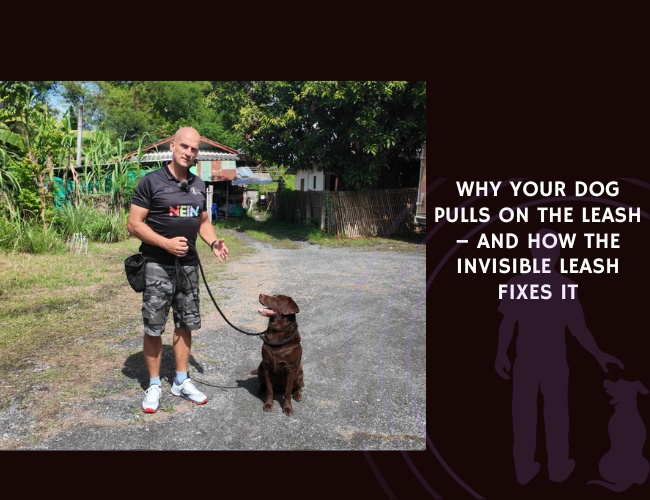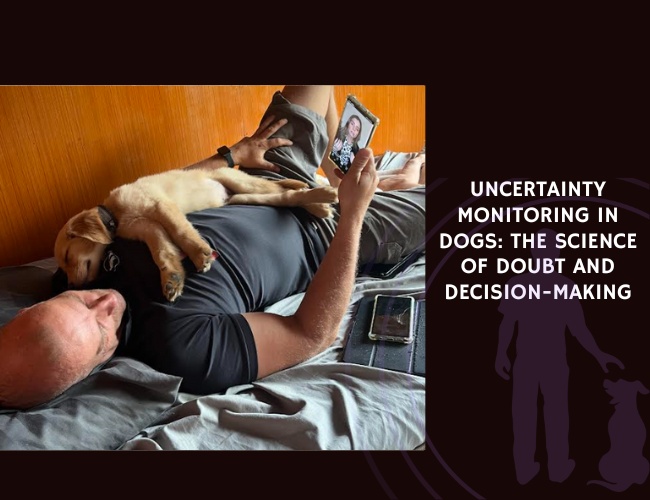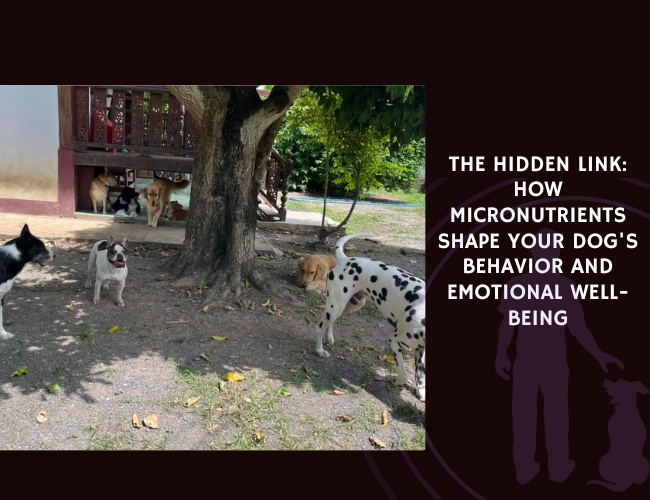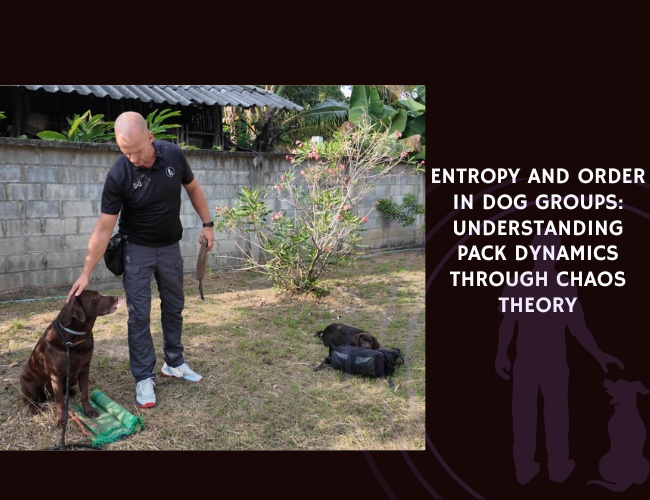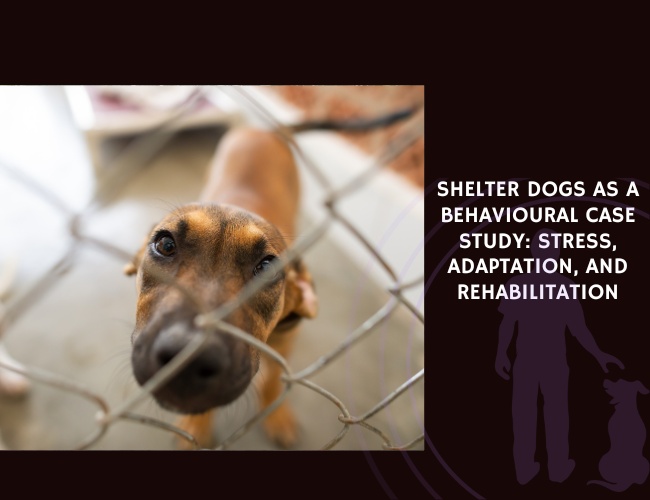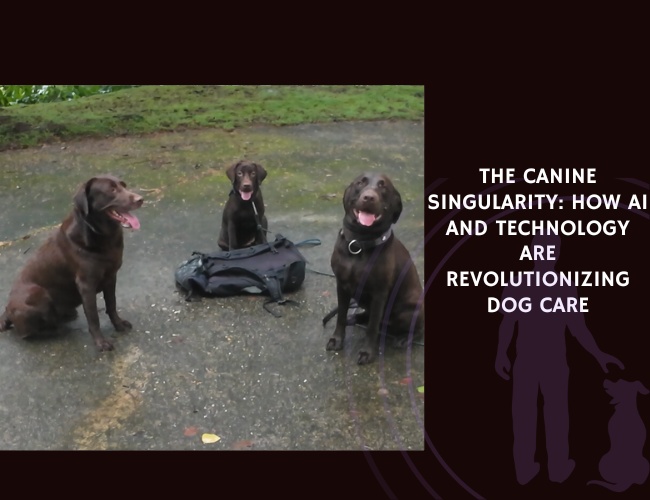Introduction
Picture this: you’re out for what should be a peaceful morning walk with your furry companion, but instead, you find yourself in a constant tug-of-war. Your shoulder aches, your arm stretches forward, and your dog seems determined to reach every lamp post, every scent marker, every fascinating corner – except the path you’d planned. Sound familiar? You’re not alone in this struggle, and more importantly, there’s a profound reason why your dog pulls – and an even more profound solution waiting to transform your walks together.
Leash-pulling isn’t just a minor inconvenience; it’s become a significant welfare concern affecting millions of dog-owner relationships worldwide. Recent research shows a troubling rise in leash-related injuries, particularly among women over 65, with dog-pulling behavior cited as the primary cause of trips, falls, and upper extremity injuries. But here’s what most training approaches miss: your dog isn’t pulling to spite you or establish dominance. They’re following an ancient blueprint written deep in their neural pathways, responding to a world of scents, movements, and stimuli that we can barely imagine. Let us guide you through understanding not just why your dog pulls, but how this behavior reveals something fundamental about the canine-human relationship – and how the NeuroBond approach can create what we call the “invisible leash.”
Character & Behavior: The Pulling Paradox
Understanding Your Dog’s Operating System
Your dog is, quite literally, an operating system on four legs – a complex biological computer running programs written by millions of years of evolution. When we observe leash-pulling, we’re witnessing the collision between ancient canine software and modern human expectations. Think of it this way: your dog’s ancestors never evolved to walk at a human’s leisurely pace on a six-foot tether. Their survival depended on swift movement, territorial exploration, and immediate response to environmental stimuli.
The locomotor drive isn’t just a behavior – it’s a fundamental life force. Dogs possess an inherent need to move, explore, and interact with their environment that goes beyond simple curiosity. This drive manifests differently across breeds: a Border Collie’s pulling might stem from their herding instinct to control movement and space, while a Beagle’s determined forward momentum comes from centuries of breeding to follow scent trails with single-minded focus. Sporting breeds like Labradors and Pointers show higher food motivation scores, which translates into increased pulling toward anything that might represent a reward – whether that’s a dropped sandwich wrapper or another dog to greet.
Age plays a fascinating role in this behavioral equation. Your dog’s pulling patterns evolve predictably through life stages:
- Puppyhood (8 weeks – 6 months): Erratic, exploratory pulling driven by curiosity about everything. Short attention span means frequent direction changes. Like a toddler in a toy store, overwhelmed by possibilities.
- Adolescence (6 months – 2 years): Intense, hormone-driven pulling with sudden triggers. Testing boundaries becomes sport. Previous training seems forgotten as the brain literally rewires itself.
- Young adulthood (2-4 years): Strategic, goal-oriented pulling toward specific interests. Patterns establish based on what has worked before. Energy remains high but becomes more focused.
- Mature adulthood (4-8 years): Selective pulling based on established preferences. Your dog knows exactly what they want and when. The pulling becomes negotiation rather than explosion.
- Senior years (8+ years): Determined but less intense pulling, often toward comfort or routine destinations. Wisdom meets reduced physical capacity, creating more thoughtful pulling patterns.
The key insight here? Pulling isn’t a single behavior but a complex response system that evolves throughout your dog’s life. 🐾
The Emotional Landscape Behind the Leash
Beneath every pull lies an emotional state we need to acknowledge and respect. When your dog surges forward, they’re not being “stubborn” or “dominant” – they’re experiencing a cascade of neurochemical responses that shape their behavior in real-time. Heightened arousal floods their system with adrenaline and potentially cortisol, creating a physiological state where standing still becomes nearly impossible. It’s similar to asking someone having a panic attack to solve a math problem – the emotional state overrides cognitive function.
Anxiety manifests through the leash in ways we often misinterpret. An anxious dog might pull frantically toward home, away from triggers, or in seemingly random patterns that actually map their stress response. Research on stress physiology in animals shows that environmental stressors create measurable changes in behavior and hormone levels. Just as environmental enrichment reduces stress-related behaviors in captive animals, understanding your dog’s emotional triggers can help us address the root cause of pulling, not just the symptom.
The frustration cycle deserves special attention. When a dog pulls and occasionally succeeds in reaching their goal – that interesting smell, that other dog, that dropped food – they’ve just won at a slot machine. This intermittent reinforcement creates one of the strongest behavioral patterns known to psychology. Every unsuccessful pull builds frustration, but every successful pull confirms that the behavior eventually works. Your dog isn’t being difficult; they’re following the exact learning pattern that nature programmed into them.
Vocalization & Communication: How Pulling “Speaks”
The Silent Language of Leash Tension
While we often focus on barks, whines, and growls as communication, leash-pulling represents a powerful form of non-verbal dialogue between you and your dog. Every pull sends a message, and unfortunately, we’re often sending mixed signals right back. When your dog pulls toward something and you follow – even reluctantly – you’ve just confirmed that pulling is an effective communication strategy. It’s like responding to someone shouting by giving them what they want; you’ve just taught them that volume works.
Your dog’s pulling pattern tells a story about their internal state and priorities. Quick, darting pulls often indicate high arousal and scattered attention – your dog is trying to process multiple stimuli simultaneously. Steady, determined pulling suggests focused intent toward a specific goal. The stop-and-start puller is negotiating with you, testing boundaries and seeing what works. By learning to read these patterns, you begin to understand what your dog is really trying to say.
Equipment speaks volumes in this conversation. A collar creates pressure on the throat, potentially triggering opposition reflex – the harder you pull back, the harder your dog pulls forward. It’s a physiological response, not defiance. Harnesses distribute pressure differently but can actually encourage pulling in some dogs by making it more comfortable to lean into the behavior. Head halters alter the biomechanics entirely, but without proper introduction, they can create new stress patterns. The equipment isn’t just a tool; it’s part of the communication channel between you and your dog.
Breaking the Miscommunication Cycle
The traditional approach to leash training often creates more confusion than clarity. Commands like “heel” or “no pull” assume your dog understands abstract human concepts and can override their instinctive responses through willpower alone. But dogs don’t process language the way we do – they process relationships, patterns, and consequences. This is where the NeuroBond philosophy revolutionizes our approach: instead of trying to suppress the pulling, we redirect it through connection.
Context becomes everything in this new dialogue. Your dog’s behavior is never random – it’s always a logical response to their perception of the situation. That sudden pull toward the bushes might seem annoying to you, but to your dog, it’s an urgent message about a fascinating scent that could indicate danger, food, or social information. When we punish this communication without offering an alternative, we create confusion and potentially escalate the behavior. The dog learns that their attempts to communicate are wrong, but not what they should do instead.
The invisible leash begins with visible understanding. When you acknowledge your dog’s communication attempts – “Yes, I see that dog across the street” – and then offer an alternative response, you’re building a new language together. This isn’t permissiveness; it’s strategic redirection that honors your dog’s instincts while guiding them toward more appropriate expressions. 🧠
Training & Education: The NeuroBond Revolution
First Principles: Connection Over Control
Traditional leash training operates on a control paradigm – suppress the unwanted behavior through correction, repetition, and consequence. But the NeuroBond approach recognizes a fundamental truth: you cannot control a thinking, feeling being indefinitely without damaging the relationship. Instead, we build connection that makes control unnecessary. This isn’t just philosophy; it’s practical neuroscience applied to dog training.
Let the dog be – this principle might seem counterintuitive when dealing with pulling, but it’s the foundation of lasting change. When you allow your dog to experience the natural consequences of their actions without punishment, learning happens organically. Standing on the leash when your dog pulls doesn’t jerk or correct; it simply creates a boundary. The dog discovers that pulling creates tension, while moving closer to you releases it. You’re not forcing compliance; you’re facilitating discovery.
The power of self-regulation emerges when dogs learn to solve problems themselves. Instead of constantly managing your dog’s behavior, you’re teaching them to manage themselves. When a dog chooses to walk beside you because they’ve discovered it feels better than pulling, you’ve created intrinsic motivation rather than external compliance. This is why dogs trained with the NeuroBond method maintain good leash manners even when distracted or excited – the behavior comes from within, not from fear of correction.
Building the Invisible Leash: A Step-by-Step Journey
The invisible leash isn’t a mystical concept – it’s the natural result of a properly developed NeuroBond. Here’s how this transformation unfolds:
Phase 1: Establishing the Bond (Weeks 1-2) Before addressing pulling directly, we build the foundation. Your dog learns to check in with you naturally, seeking eye contact and proximity without commands. This happens through strategic rewards for voluntary attention, not through demanding focus. Daily goals for this phase:
- Reward every voluntary eye contact, no matter how brief – aim for 50+ rewards daily
- Practice “proximity pays” by dropping treats near your feet when your dog chooses to be close
- Establish a “connection bubble” of about 3 feet where good things consistently happen
- Ignore pulling completely – don’t correct, don’t follow, just become boring
- Celebrate micro-moments of attention with enthusiastic but calm praise
Phase 2: Creating Shared Context (Weeks 3-4) Now we introduce the concept of moving together as a team. This isn’t about position or heel; it’s about awareness. Essential components:
- Your dog learns that forward movement only happens with a loose leash
- Stopping isn’t punishment – it’s information: “This isn’t working, try something else”
- Direction changes become a fun game rather than correction
- Check-ins during movement get jackpot rewards (multiple treats, play, praise)
- Duration between rewards gradually increases as connection strengthens
- Environmental rewards (sniffing, greeting) become privileges earned through connection
Phase 3: Instinct as Teacher (Weeks 5-6) This is where the magic happens. We use your dog’s natural instincts as the training pathway:
- Scent investigations allowed on loose leash only – tension means the sniff session ends
- “Go sniff” becomes a reward for maintaining connection, not a separate command
- Natural consequences teach faster than corrections ever could
- Your dog discovers that proximity to you actually increases their freedom
- Challenging distractions become opportunities to practice choice-making
- Success is measured by recovery time, not perfect prevention
Phase 4: The Invisible Emerges (Week 7 and beyond) As the bond solidifies and patterns establish, something remarkable occurs. Your dog begins to self-regulate without prompts. They check in during exciting moments, moderate their pace to match yours, and maintain connection even when distracted. The physical leash becomes almost ceremonial – the real connection is neurological and emotional. 🧡
Performance & Activities: Transforming Daily Walks
From Struggle to Symphony
Once the NeuroBond is established, daily walks transform from exhausting battles into enriching experiences for both species. You’re no longer managing behavior; you’re sharing an adventure. This shift isn’t just psychological – it creates measurable improvements in both human and canine welfare. Owners report less physical strain, reduced anxiety about walks, and increased walking frequency. Dogs show lower stress indicators, better social skills, and improved overall fitness.
Environmental triggers become training opportunities rather than obstacles. That dog across the street? It’s a chance for your dog to practice their check-in behavior and get rewarded for choosing connection over reaction. The fascinating smell in the grass? Your dog learns they can investigate it calmly and thoroughly when they maintain loose leash positioning, getting more sensory information than they would through frantic pulling.
Different contexts require different applications of the NeuroBond principle. Urban environments with their sensory overload might require more frequent check-ins and higher value rewards initially. Rural walks might allow for more freedom within the connection bubble, letting your dog range further while maintaining that invisible tether of attention. The principle remains constant: connection brings freedom, disconnection brings limitation.
Advanced Applications: Beyond Basic Walking
The invisible leash concept extends far beyond neighborhood strolls. Dogs trained with this method show remarkable adaptability across various contexts:
Trail hiking becomes possible without constant leash management. Your dog naturally orbits around you, checking in at regular intervals while enjoying off-leash freedom where permitted. They’ve learned that proximity to you is valuable, not restrictive.
Veterinary and grooming visits transform when your dog has learned to seek support from you during uncertainty. Instead of pulling frantically in the waiting room, they look to you for guidance and reassurance. The NeuroBond becomes their coping mechanism.
Multi-dog households benefit enormously when each dog has developed their individual invisible leash. Walks become coordinated rather than chaotic, with each dog maintaining their connection to you rather than getting tangled in competitive pulling.
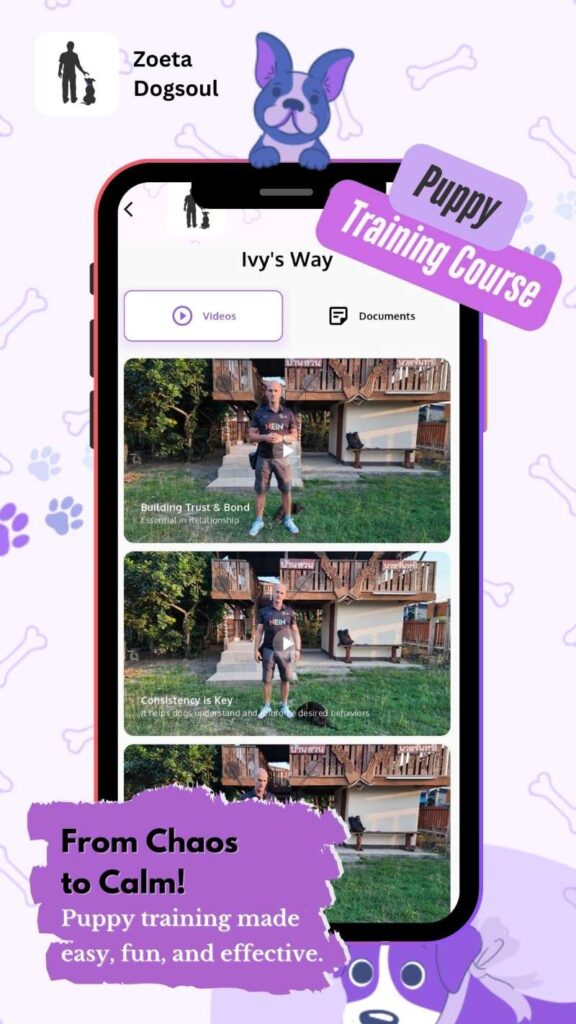
Nutritional Recommendations: Fueling Focus
The Biochemistry of Behavior
While it might seem disconnected from leash training, nutrition plays a crucial role in your dog’s ability to learn and maintain behavioral changes. A dog fueled by high-sugar, low-quality food experiences blood sugar spikes and crashes that directly impact impulse control and attention span. It’s like trying to teach a child after they’ve consumed a bag of candy – the biology works against the training.
Protein quality matters more than quantity when it comes to behavioral stability. High-quality proteins provide the amino acids necessary for neurotransmitter production, particularly serotonin and dopamine, which regulate mood and focus. Dogs fed appropriate protein levels show better learning retention and emotional regulation during training sessions.
Timing of meals affects training success. A dog walking on an empty stomach might pull more intensely toward any potential food source. Conversely, a dog immediately after a large meal might be sluggish and less responsive to training. The sweet spot? Light, high-value treats during training, with main meals scheduled to avoid walks immediately before or after eating.
Supplements for Success
Certain nutritional supplements can support the neurological changes necessary for developing the invisible leash. Consider these evidence-based additions to your dog’s diet:
Calming Support Supplements:
- Omega-3 fatty acids (EPA/DHA): Support brain health, improve learning, reduce anxiety-related behaviors. Dose: 20-30mg per pound of body weight daily
- L-theanine: Promotes relaxation without sedation, helps anxious dogs focus. Found naturally in green tea
- Magnesium: The “relaxation mineral” that supports nervous system function and muscle relaxation
- B-complex vitamins: Essential for neurotransmitter production and stress management
- Adaptogenic herbs (ashwagandha, rhodiola): Help the body adapt to stress, though research in dogs is still emerging
Gut-Brain Support:
- Probiotics: Multiple strains including Lactobacillus and Bifidobacterium for optimal gut-brain axis health
- Prebiotics: Feed beneficial bacteria, supporting overall microbiome balance
- Digestive enzymes: Improve nutrient absorption, reducing physical stress from poor digestion
Remember: supplements support but don’t replace proper training. They create a better biological foundation for learning, not magical behavior change. Always consult your veterinarian before starting any supplement regimen.
Health Concerns: When Pulling Signals Problems
Physical Health Indicators
Sometimes, sudden changes in leash behavior indicate underlying health issues that need attention. A dog who suddenly starts pulling backward might be experiencing vision problems. Erratic pulling patterns could indicate ear infections affecting balance. Increased pulling intensity might signal pain that makes normal walking uncomfortable, causing the dog to rush through walks.
Musculoskeletal issues both cause and result from chronic pulling. Dogs who pull constantly may develop neck injuries, tracheal damage, or spinal misalignments. These physical problems then create compensatory movement patterns that make proper leash walking even more difficult. It’s a vicious cycle that requires both veterinary intervention and modified training approaches.
Thyroid and hormonal imbalances can dramatically affect behavior. Hypothyroid dogs might pull less due to lethargy, while hyperthyroid dogs might show increased pulling due to heightened anxiety and reactivity. Any sudden behavioral change warrants veterinary evaluation before assuming it’s purely training-related.
Mental Health Manifestations
Pulling patterns can reveal psychological distress that goes beyond simple training issues. Dogs with anxiety disorders might show specific pulling patterns – pulling toward home, pulling away from triggers, or freezing and then explosive pulling when overwhelmed. These patterns tell us the dog needs more than basic leash training; they need comprehensive behavioral support.
Compulsive disorders can manifest through leash behavior. Some dogs develop ritualistic pulling patterns that serve as coping mechanisms for stress. Addressing these requires understanding the underlying anxiety, not just managing the surface behavior.
Cognitive dysfunction in senior dogs might present as confused pulling patterns, forgetting trained behaviors, or sudden fearfulness leading to erratic leash behavior. These dogs need modified training approaches that account for their changing cognitive abilities.
Lifestyle & Environment: Creating Success Conditions
Environmental Design for Training Success
Your dog’s living environment profoundly impacts their ability to develop and maintain good leash behaviors. A dog living in chronic stress at home – whether from noise, conflict, or inadequate space – brings that stress to every walk. The NeuroBond philosophy recognizes that training doesn’t happen in isolation; it’s part of a comprehensive lifestyle approach.
Enrichment reduces frustration-driven pulling by meeting your dog’s cognitive and sensory needs before walks. A dog who’s spent 15 minutes working on a puzzle feeder or snuffle mat has already exercised their seeking system, making them less desperate to pull toward every stimulus on walks. Research shows that environmental enrichment reduces stress markers and problematic behaviors across species.
Predictable routines support behavioral change. Dogs who know when walks happen, what route you’ll likely take, and what the expectations are show better leash manners than dogs facing constant uncertainty. This doesn’t mean rigid inflexibility, but rather a framework within which variations can occur.
Social Dynamics and Pulling
The presence of other animals – whether other household pets or neighborhood dogs – significantly influences leash behavior. Dogs in multi-dog households might pull more intensely due to competition or social facilitation. Understanding these dynamics helps us address the root cause rather than just managing symptoms.
Pack walks require special consideration. The NeuroBond must be established individually before attempting group walks. Each dog needs their own connection to you, not just to follow the pack dynamic. This individual attention might seem time-consuming initially but prevents the chaos of competitive pulling that often develops in multi-dog walks.
Environmental triggers vary by location and time. Urban environments present constant stimuli – other dogs, traffic, people, urban wildlife. Rural settings might have fewer but more intense triggers – livestock, wild animals, novel scents. The invisible leash adapts to these contexts because it’s based on relationship, not rigid rules.
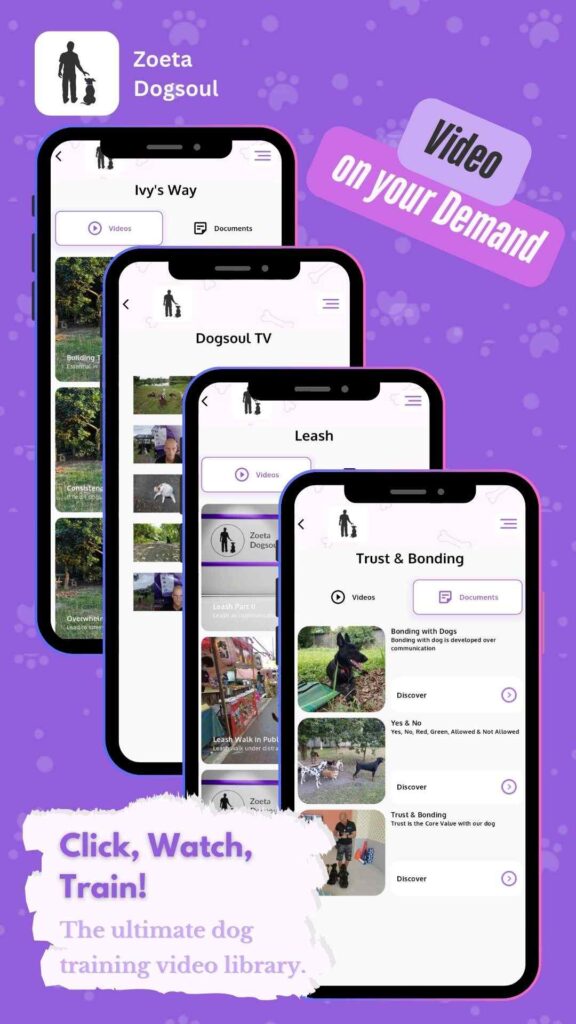
Troubleshooting: When Progress Stalls
Understanding the Plateau Phenomenon
Just when you think you’ve cracked the code, your dog suddenly reverts to pulling like they’ve forgotten everything. Before you despair, know this: plateaus and setbacks are not just normal, they’re actually signs that deep learning is occurring. Your dog’s brain is consolidating new neural pathways, and sometimes this process creates temporary confusion between old patterns and new ones. Think of it like renovating a house while still living in it – there’s bound to be some chaos before the new structure stabilizes.
Life changes trigger regression in predictable ways. A new baby in the home, moving houses, seasonal changes that bring new smells and activities – these all challenge the established NeuroBond. Your adolescent dog hitting sexual maturity might suddenly pull with renewed intensity as hormones flood their system. That perfectly trained 8-month-old who becomes a pulling monster at 14 months? They’re not being rebellious; their brain is literally rewiring itself. During these periods, consistency becomes your lifeline. Don’t abandon the method or add new techniques – simply return to basics and rebuild.
The extinction burst is perhaps the most misunderstood phenomenon in behavior modification. Right before a behavior completely disappears, it often intensifies dramatically – like a flame flaring before it dies. Your dog might pull harder than ever for a few days or weeks, testing whether the old pattern still works. This isn’t failure; it’s the death throes of an outdated behavioral program. Hold steady. The dogs who show the strongest extinction bursts often become the most reliable on the invisible leash once they break through.
Identifying Hidden Reinforcement
Sometimes we’re unknowingly maintaining the very behavior we’re trying to eliminate. You might be rewarding pulling in subtle ways you haven’t recognized. Common hidden reinforcers that sabotage invisible leash development:
Unconscious Movement Patterns:
- Speeding up slightly when your dog pulls, even without meaning to follow
- Leaning forward when tension increases, signaling forward momentum
- Taking “just one more step” to let them reach something while the leash is tight
- Allowing successful pulling when you’re tired, rushed, or distracted
- Moving toward what your dog wants while talking to someone, not noticing the pulling
Attention Reinforcement:
- Talking more when they pull (“No, easy, stop, wait”) – even negative attention is attention
- Making eye contact during pulling episodes
- Touching or petting to “calm” them while they’re pulling
- Getting animated or emotional (frustrated or amused) when they pull
- Explaining to others “Sorry, he always does this” while the behavior continues
Environmental Rewards:
- Occasionally letting them greet dogs/people after pulling
- Sometimes allowing sniffing when they’ve pulled to the spot
- Reaching destinations (park, car, door) despite pulling
- Variable success rates – the most powerful reinforcement schedule known to psychology
The most common hidden reinforcer? Intermittent success – occasionally letting your dog reach their goal through pulling because you’re tired, distracted, or in a hurry. Watch for these subtle maintainers and eliminate them consistently.
The smartphone saboteur deserves special mention. Walking while distracted by your phone prevents you from reading your dog’s signals and responding appropriately. Those micro-moments of connection that build the NeuroBond can’t happen when you’re scrolling. Your dog learns that pulling gets more of your attention than walking nicely because pulling makes you look up from your screen.
When to Seek Help vs. When to Persist
Not all pulling issues can be resolved through patience alone. Understanding the difference between normal challenges and situations requiring professional intervention saves time, prevents frustration, and ensures your dog gets appropriate help.
Persist with the NeuroBond method when:
- Progress is happening, even if slowly – your dog has moments of beautiful walking between pulling episodes
- The pulling is situational rather than constant (specific triggers like other dogs or squirrels)
- Your dog responds well in calm environments but struggles with distractions
- Check-ins are happening, even if inconsistent
- Your dog shows recognition of the training but hasn’t generalized it yet
- You see improvement in related behaviors (calmer greetings, better focus at home)
- The pulling decreases in intensity even if frequency remains high initially
Seek professional support when:
- Pulling is accompanied by aggressive displays (lunging, snarling, snapping)
- Your dog seems panicked, completely “checked out,” or dissociated during walks
- No improvement after 8 weeks of consistent, daily application
- The pulling is causing or risking injury to you or your dog
- Your dog shows signs of pain (bunny hopping, reluctance to walk, sudden behavior changes)
- Extreme fear responses that escalate rather than improve with exposure
- You’re feeling overwhelmed, frustrated to the point of anger, or considering punishment-based methods
Sometimes an experienced eye can spot what we’re too close to see, adjusting the method to fit your specific situation. Professional help isn’t failure – it’s wisdom.
Recovery After Setbacks
Incidents happen – a dog fight, a scary experience with traffic, a thunderstorm during a walk. These events can damage the carefully built NeuroBond, but they don’t destroy it permanently. Recovery requires patience and strategic rebuilding. Start by giving your dog (and yourself) time to decompress. Don’t rush back into training the next day. When you do return to walks, begin in the safest, most familiar environment possible.
Rebuild in layers, starting with the foundation. Re-establish the check-in behavior in your home and yard before attempting street walks. Use higher value rewards temporarily to rebuild positive associations. Most importantly, manage your own emotional state – dogs recovering from trauma are hypersensitive to our anxiety. Your calm confidence becomes their anchor. The beautiful thing about NeuroBond? Because it’s built on relationship rather than mere behavior, it often recovers stronger than before, deepened by the shared experience of working through difficulty together. 🧠
Breed-Specific Adaptations
Terriers: Channeling the Chase
Terriers don’t just see the world; they hunt it. Every movement triggers their deeply embedded prey drive, making traditional leash training an exercise in futility. The NeuroBond approach works brilliantly with terriers precisely because it doesn’t try to suppress this drive – it redirects it. Your Jack Russell isn’t being stubborn when they lunge at every leaf; they’re following genetic programming refined over centuries. The key is making yourself more interesting than the potential prey.
Modified NeuroBond for terriers involves what we call “controlled hunting.” During walks, incorporate brief “hunt” sessions where your terrier can investigate intensely in a specific area while maintaining loose leash. Set a clear beginning (“go hunt!”) and end (“all done!”) to these sessions. This satisfies their seeking drive while maintaining structure. Between hunt sessions, use rapid-fire rewards for attention – terriers respond better to frequent, small reinforcements than occasional large ones. Their quick minds need constant engagement, so the check-in behavior becomes a game rather than obedience.
The terrier paradox: These dogs often develop the strongest invisible leashes once they understand the concept, because their intelligence allows them to grasp patterns quickly. The challenge is getting through their initial “but why should I?” phase. Once a terrier decides the NeuroBond benefits them, they commit fully. They’re negotiators, not soldiers – work with this trait rather than against it.
Sight Hounds vs. Scent Hounds: Two Different Worlds
Sight hounds and scent hounds might both be hunters, but they require completely different invisible leash approaches. Your Greyhound sees movement and reacts before their conscious brain engages – it’s pure instinct. Your Beagle, meanwhile, disappears into an olfactory universe you can’t even imagine. Understanding these fundamental differences transforms your training approach.
Sight hounds need predictive management. By the time your Whippet has spotted the squirrel, it’s too late for training – they’re already in chase mode. The NeuroBond for sight hounds focuses on preemptive connection. You learn to read the environment and engage your dog before triggers appear. Use peripheral vision games where your dog gets rewarded for noticing movement but choosing to check in with you instead of chasing. The invisible leash becomes about trust – your sight hound learns you’ll keep them safe from their own instincts.
Scent hounds require scent-incorporation strategies. Fighting against your Bloodhound’s nose is like asking them not to breathe. Instead, make scenting part of the NeuroBond process. Teach “scent check-ins” where your dog can investigate a smell thoroughly but must maintain loose leash and periodically look back at you. Use scent games during walks where you hide treats and let your dog find them, but only while maintaining connection. The invisible leash for scent hounds isn’t about limiting their sniffing – it’s about sniffing together as a team.
Working Breeds: When Drive Meets Dedication
Working breeds bring unique advantages and challenges to invisible leash training. Your Border Collie’s intense focus can accelerate NeuroBond development, but it can also create obsessive patterns if misdirected. German Shepherds might interpret the training as a job, excelling quickly but potentially becoming rigid in their application. Understanding your working dog’s specific job helps tailor the approach.
Herding breeds often pull in patterns – circling back, pushing forward, attempting to control movement of people or other animals. The NeuroBond channels this into what we call “collaborative herding.” Your dog learns that staying connected to you allows them to help “move the flock” (even if the flock is imaginary). Use directional cues and movement patterns that satisfy their need to control space while maintaining loose leash. These dogs often excel at the invisible leash because it gives them a clear job: maintaining connection.
Guardian breeds might resist the vulnerability of the NeuroBond initially. Your Great Pyrenees or Anatolian Shepherd has been bred for independent decision-making. The key is framing the invisible leash as enhancing their guardian role – they can protect better when connected to you. These dogs often need longer to develop trust but create unbreakable bonds once committed.
Brachycephalic Breeds: Breathing Room Required
Flat-faced breeds require special consideration in invisible leash training. Your Pug or French Bulldog isn’t being lazy when they resist walking – they might be conserving oxygen. The NeuroBond approach adapts beautifully because it reduces the physical struggle that traditional leash training creates. No pulling means easier breathing, which these dogs quickly learn to appreciate.
Training sessions must be shorter but more frequent. Five three-minute sessions work better than one fifteen-minute session. Use the natural breaks for rest as reward opportunities – your Bulldog learns that maintaining connection earns comfortable pauses. Temperature awareness becomes crucial; the invisible leash might need to be practiced indoors during weather extremes. These breeds often excel at the emotional component of NeuroBond because they’re so human-focused, compensating for physical limitations with exceptional connection.
Mixed Breeds: The Advantage of Unpredictability
Mixed breeds bring a beautiful unpredictability to invisible leash training. Without breed-specific assumptions, you’re forced to observe your individual dog and respond to their unique combination of traits. This actually accelerates NeuroBond development because you’re not fighting against preconceptions. Your Lab-Husky mix might have the Husky’s independence with the Lab’s food motivation – a combination that, once understood, creates powerful training opportunities.
Mixed breeds teach us to abandon formulas and embrace flexibility. The invisible leash philosophy of “let the dog be” works perfectly here because you’re not trying to fit your dog into a breed-standard box. Watch for emerging patterns: Does your dog show terrier-like prey drive in some situations but hound-like scent drive in others? Adapt accordingly. Mixed breeds often develop especially creative and personalized invisible leash styles, making walks uniquely theirs. 🐾
Tethered. Driven. Misunderstood.
Pulling is ancient code. Your dog’s instincts for movement, scent, and exploration collide with the unnatural constraint of a leash. What looks like defiance is really biology pressing against human design.
Emotion fuels the surge. Adrenaline, cortisol, and arousal transform calm walks into forward explosions. Each pull is less about stubbornness and more about a nervous system compelled to act.
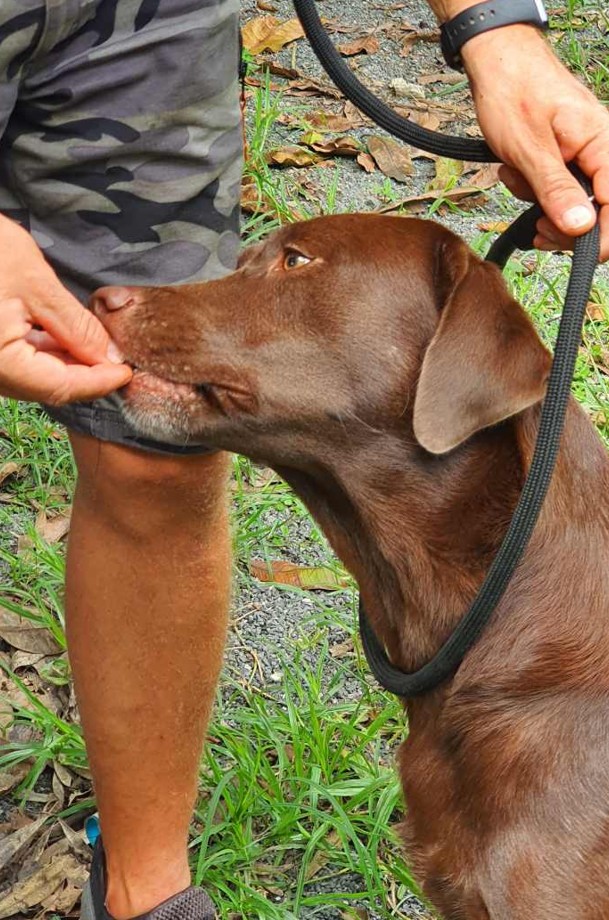

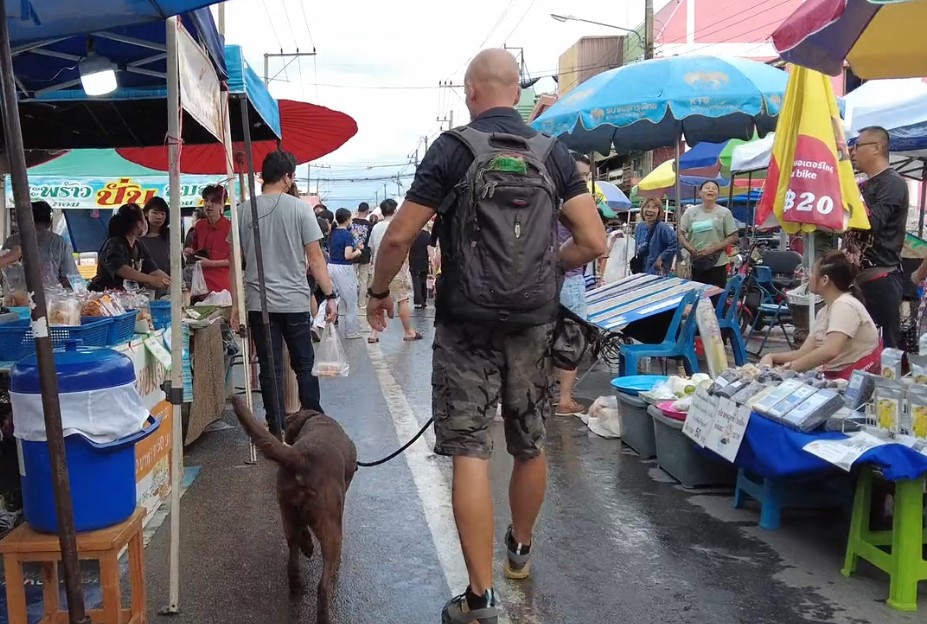
Connection creates freedom. The Invisible Leash reframes control into trust. By aligning with your dog’s drives instead of resisting them, you replace force with cooperation and chaos with harmony.
The Human Psychology Component
The Tension Telegraph: How Your Anxiety Travels Down the Lead
Here’s a truth that might sting: your dog isn’t the only one who needs training. Every emotion you feel transmits directly through the leash like a telegraph wire. When you spot another dog approaching and your shoulders tense, your dog feels that anxiety before you’ve even consciously registered it. They don’t know you’re worried about their behavior – they just know danger is coming because their trusted human is broadcasting stress signals. This creates a self-fulfilling prophecy where your anxiety about pulling actually causes pulling.
Your nervous system and your dog’s are in constant dialogue. When you hold your breath as a trigger approaches, your dog’s respiratory rate changes. When your heart rate spikes, theirs follows. This isn’t mystical – it’s biological synchronization that happens between bonded individuals. The leash becomes a conduit for emotional contagion. The good news? This works both ways. When you learn to maintain calm, regulated breathing and relaxed shoulders, your dog’s system naturally down-regulates to match yours.
Breaking the anticipation cycle requires conscious practice. Notice where you hold tension – jaw, shoulders, hands gripping the leash. Before your dog can develop an invisible leash, you need to develop an invisible calm. Practice walking meditation without your dog first. Learn to maintain steady breathing and relaxed muscles while walking past your own triggers. When you can walk calmly past the house with the barking dogs while alone, you’re ready to help your dog do the same.
Unlearning Control: Breaking Your Own Reactive Patterns
Most of us come to dog ownership with deeply embedded beliefs about control and obedience. We’ve been taught that good dogs heel, bad dogs pull, and our job is to make them comply. The constant urge to correct, direct, and micromanage isn’t helping – it’s creating the very resistance you’re trying to eliminate. Every time you jerk the leash or bark a command, you’re engaging in your own reactive behavior that mirrors and amplifies your dog’s.
The correction addiction is real. You’ve been conditioned to respond to pulling with counter-pulling, to answer every unwanted behavior with immediate intervention. This hypervigilance exhausts both you and your dog. Breaking this pattern requires recognizing that your corrections are often more about your own anxiety than your dog’s behavior. Ask yourself: Am I correcting because it’s needed, or because I feel I should be doing something?
Developing response flexibility means having options beyond correction. When your dog pulls, instead of automatically tightening the leash, try: stopping and waiting, changing direction smoothly, becoming suddenly interesting, or simply breathing and allowing the moment to pass. The NeuroBond develops not through what you prevent but through what you allow and redirect. Your dog learns to self-regulate when you stop constantly regulating them.
Mindfulness Techniques for Trigger Moments
When that off-leash dog comes running toward you, or your reactive dog spots their nemesis across the street, your ability to remain centered becomes crucial. These moments test not just your training but your nervous system’s capacity for regulation. Mindfulness isn’t just helpful here – it’s essential for maintaining the NeuroBond when it matters most.
The STOP technique works brilliantly in crisis moments:
- Stop moving physically. Plant your feet, bend your knees slightly for stability
- Take a breath – specifically, a long exhale which activates your parasympathetic nervous system
- Observe without judgment – what’s actually happening versus what you fear might happen
- Proceed with intention rather than reaction
This four-second intervention can prevent a training setback from becoming a relationship rupture. Your dog learns that when things get intense, you become steady – making you their safe haven rather than another source of stress.
Pre-Walk Centering Routine (2-3 minutes):
- Stand with your dog’s leash loose, both feet firmly planted
- Take 5 deep breaths, extending the exhale longer than the inhale
- Scan your body from head to toe, consciously releasing tension spots
- Set an intention for the walk (not a goal, but a quality like “peaceful” or “connected”)
- Make soft eye contact with your dog, sharing a moment of calm before moving
- Begin walking only when you both feel settled
During-Walk Reset Moments:
- Every 5 minutes, pause for a single conscious breath
- Use landmark cues (fire hydrants, stop signs) as mindfulness bells
- Notice three things: something you see, hear, and feel
- Check your shoulder position and consciously drop them if raised
- Soften your grip on the leash – tension in your hand creates tension in your dog
Peripheral awareness practice keeps you ahead of triggers. Instead of tunnel vision on your dog, maintain soft focus that takes in the full environment. You’ll spot triggers before they become problems, giving you time to engage your dog’s attention proactively. This isn’t hypervigilance – it’s relaxed awareness, like driving a familiar route while listening to music.
The Baggage We Carry: Past Training Interference
If you’ve tried other training methods before NeuroBond, you’re carrying invisible baggage that affects your current efforts. Maybe you used prong collars, and now you feel guilty. Perhaps you did clicker training, and your hand keeps reaching for a non-existent clicker. Or you learned dominance-based methods that make you feel weak when you’re not “being the alpha.” This psychological residue interferes with developing genuine connection.
Method confusion creates inconsistency that confuses your dog. One moment you’re building NeuroBond, the next you unconsciously slip into old patterns. Your dog receives mixed messages and can’t establish reliable patterns. Recognize these moments without judgment – they’re normal. Simply notice when old patterns emerge and gently return to the NeuroBond principle of connection over control.
Guilt and grief often accompany the transition to relationship-based training. You might grieve the time lost using methods that didn’t honor your dog’s intelligence. You might feel guilty about past corrections or missed opportunities for connection. These feelings are valid and actually helpful – they indicate you’re growing. Channel them into commitment to the new approach rather than dwelling on past mistakes.
Letting Go: The Grief Process of Releasing Control
There’s something profound and sometimes painful about releasing the illusion of control over another living being. You might experience actual grief as you let go of the fantasy that you can make your dog do anything. This grief is necessary for the birth of true partnership. It’s similar to parents realizing they can guide but not control their children – a fundamental shift in relationship dynamics.
The stages of release often mirror classic grief stages. Denial: “This can’t work, dogs need leadership.” Anger: “Why won’t my dog just listen?” Bargaining: “Maybe I’ll use NeuroBond but keep some corrections.” Depression: “I’m failing at this.” And finally, acceptance: “We’re learning together.” Moving through these stages isn’t linear – you might cycle through them multiple times.
The freedom on the other side makes the journey worthwhile. When you stop trying to control your dog, you discover something magical: they start controlling themselves. The energy you used to spend on vigilance and correction becomes available for connection and enjoyment. Walks become meditative rather than military. You’re no longer a prison guard but a travel companion. The invisible leash isn’t just invisible to observers – it becomes invisible to you, operating automatically through established connection rather than conscious management. 🧡
The Science Deep-Dive: Neuroplasticity and Bonding
The Neurochemical Symphony of Connection
When you and your dog practice NeuroBond training, you’re conducting a complex neurochemical orchestra in both your brains. Each positive interaction releases a cascade of oxytocin – the same bonding hormone that connects mothers to infants. This isn’t anthropomorphism; it’s measurable science. Studies show that when dogs and humans make eye contact, both experience oxytocin surges similar to those seen in human parent-child bonding. The invisible leash is literally built from chemical bonds that create emotional ones.
Dopamine drives the learning loop in powerful ways. Every time your dog checks in with you and receives acknowledgment – whether through treats, praise, or simply continued forward movement – their brain releases dopamine. This neurotransmitter doesn’t just feel good; it physically strengthens the neural pathways associated with the behavior. The more your dog practices connection, the more their brain craves it. Traditional correction-based training might suppress unwanted behavior, but it doesn’t create this positive neurochemical reinforcement for the desired behavior.
Serotonin stabilizes the system. As the NeuroBond strengthens and walks become predictable and pleasant rather than stressful, both human and canine serotonin levels stabilize. This neurotransmitter promotes calm, confident behavior and emotional regulation. Dogs with healthy serotonin levels show better impulse control and less reactive behavior. The invisible leash works partly because it promotes neurochemical balance that makes good choices easier for your dog.
Mirror Neurons: The Hardware of the Invisible Leash
The discovery of mirror neurons revolutionized our understanding of learning and empathy. These specialized cells fire both when an individual performs an action and when they observe another performing that action. Your dog’s mirror neuron system is constantly reading and reflecting your emotional and physical state. When you model calm, attentive walking, your dog’s mirror neurons are literally rehearsing the same state.
This creates unconscious synchronization that explains why the invisible leash seems almost magical once established. Your dog isn’t consciously deciding to match your pace – their mirror neurons are automatically aligning their movement with yours. This is why walking with genuine relaxation is more effective than all the verbal commands in the world. Your dog’s brain is mirroring your state at a level below conscious thought.
The mirror neuron system develops through repetition. Each walk where you maintain calm attention strengthens these neural pathways. Young puppies have particularly plastic mirror neuron systems, which is why early NeuroBond training can be so effective. But even adult dogs retain significant mirror neuron plasticity, especially in relationship to their bonded humans. The invisible leash leverages this biological system that evolved for social learning and cooperation.
Brain Geography: Mapping the Neural Changes
Understanding which brain regions are involved in leash behavior helps us appreciate why the NeuroBond approach is so effective. The amygdala, your dog’s alarm system, typically fires intensely when they see triggers while on a traditional leash – they’re trapped and can’t flee or investigate. This creates chronic stress that actually increases pulling over time. The NeuroBond approach calms the amygdala by providing security through connection rather than restriction.
The prefrontal cortex – the brain’s executive function center – develops stronger connections through invisible leash training. This region handles impulse control, decision-making, and emotional regulation. Every time your dog chooses to check in rather than pull toward a distraction, they’re strengthening prefrontal cortex pathways. Traditional correction-based training often bypasses this region, creating compliance through fear (amygdala) rather than choice (prefrontal cortex).
The hippocampus encodes the spatial and contextual memories that make the invisible leash portable across environments. As your dog practices NeuroBond in various locations, the hippocampus creates a rich map of “walking together” that transcends specific places. This is why dogs trained with this method can maintain loose leash walking even in entirely new environments – the behavior is encoded as a relationship pattern, not a location-specific rule.
Myelination: Making the Invisible Visible in the Brain
Every time your dog practices the invisible leash behaviors, their neurons are becoming more efficient through a process called myelination. Myelin is a fatty substance that wraps around frequently-used neural pathways, allowing electrical signals to travel up to 100 times faster. This is how behaviors become automatic – the neural pathway becomes a superhighway rather than a dirt road.
The magic number appears to be around 400 repetitions for initial myelination, with full automation occurring after several thousand repetitions. This explains why the invisible leash often “clicks” suddenly after weeks of practice – you’ve reached critical myelination mass. The behavior shifts from conscious effort to automatic response. Your dog no longer thinks about checking in; they just do it.
Age affects myelination rates but doesn’t prevent it. Puppies under six months myelinate new pathways rapidly, which is why early training is so valuable. Adult dogs myelinate more slowly but actually maintain myelin better once formed. Senior dogs can still develop new myelinated pathways, though it may take more repetitions. The beautiful thing about the NeuroBond approach is that every positive interaction contributes to myelination, not just formal training sessions.
Critical Periods and Optimal Windows
While dogs can learn throughout their lives, certain developmental windows offer accelerated NeuroBond formation. The primary socialization window (3-14 weeks) is when puppies are primed to form social bonds and learn communication patterns. Introducing invisible leash concepts during this period – even just through gentle guidance and connection-building – creates a foundation that lasts a lifetime.
The adolescent reconstruction period (6-18 months) is often seen as challenging, but it’s actually a second critical period for NeuroBond development. The teenage dog’s brain is rewiring dramatically, pruning unused neural pathways and strengthening used ones. This is why consistency during adolescence is crucial – you’re literally shaping which neural pathways survive into adulthood. The pulling behaviors that get practiced during this period can become deeply embedded, but so can connection patterns.
Adult dogs have their own advantage: emotional maturity. While puppies learn faster, adult dogs often form deeper, more nuanced NeuroBonds because they have better emotional regulation and longer attention spans. The “optimal” age for invisible leash training isn’t a specific number – it’s whenever you and your dog are ready to commit to connection. The neuroplasticity research is clear: it’s never too late to build new neural pathways, especially those strengthened by emotional bonding. 🧠
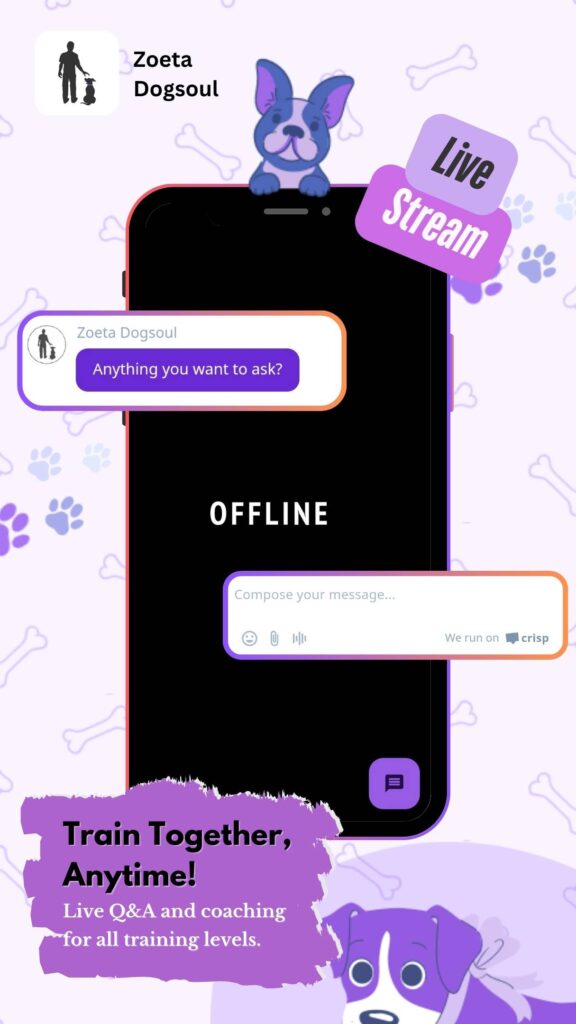
The Ripple Effect: Beyond Walking
Door Darting: When the Invisible Leash Extends Indoors
One of the most remarkable transformations happens at your front door. Dogs trained with the NeuroBond method naturally stop door darting – not because they’ve been taught “wait” as a command, but because they’ve internalized checking in before transitions. The invisible leash extends beyond walks into a general principle: connection before action. Your dog starts pausing at thresholds not from trained inhibition but from genuine consideration of where you are in space and attention.
The threshold becomes a connection point rather than a conflict zone. Dogs begin offering eye contact at doors, checking if you’re ready to move through together. This isn’t trained as a separate behavior – it emerges naturally from the established neural pathways of mutual awareness. The dog who used to bolt through every open door now waits, not from fear of correction but from the simple understanding that good things happen when you move together.
This transforms every transition in your daily life. Car doors, garden gates, even the invisible boundaries of rooms in your home become places where your dog naturally checks in. The exhausting vigilance required to prevent escapes dissolves into easy cooperation. Visitors comment on how “well-trained” your dog is, not realizing they’re witnessing something deeper than training – they’re seeing a relationship in action.
Recall Revolution: Coming When Called Without Being Called
Perhaps the most magical outcome of invisible leash training is what happens to recall. Dogs who’ve developed strong NeuroBonds start returning to their owners before being called. They develop an internal compass that keeps them oriented toward you even at distance. This isn’t trained recall – it’s voluntary proximity maintenance, and it’s far more reliable than any commanded behavior.
The check-in habit generalizes from leash walking to off-leash freedom. Your dog develops a mental rubber band that stretches only so far before naturally contracting back toward you. They might explore that fascinating smell or greet another dog, but they maintain awareness of your location and movement. If you change direction, they notice and adjust without being told. The invisible leash becomes truly invisible – no physical connection needed because the neural connection is so strong.
Emergency recall becomes almost unnecessary because your dog never gets far enough away to need it. But when you do call, the response is immediate and enthusiastic because returning to you is already their default behavior, not an interruption of their desires. The foundation of voluntary connection makes commanded recall feel like an invitation rather than an order.
Transforming Car Behavior
Dogs with established invisible leashes often show dramatic improvements in car behavior without specific car training. The principle of settling into connection rather than pulling toward stimuli translates directly to vehicle travel. The dog who used to whine, pace, or bark at everything passing the window learns to relax into the journey because they trust your navigation.
Car anxiety often dissolves as dogs learn they don’t need to manage or react to the environment – you’ve got it handled. The same neural pathways that keep them calmly connected during walks activate during drives. They might watch the world go by with interest, but without the frantic need to respond to every stimulus. The invisible leash principle of “being together” transcends the mode of transportation.
The Greeting Revolution: Calm Connections with Visitors
The dog who doesn’t pull on walks naturally becomes the dog who doesn’t jump on visitors. The impulse control developed through NeuroBond training generalizes to all exciting situations. When guests arrive, your dog checks in with you rather than exploding toward the door. They’ve learned that connection with you provides better outcomes than frantic independent action.
Visitors become less overwhelming because your dog has a secure base – you. Instead of feeling they must manage the social situation alone, they look to you for cues. The same check-in behavior practiced on walks happens automatically: “Exciting thing! Better check with my human!” This split-second pause allows for better choices. Jumping decreases not through punishment but through the development of alternative neural pathways.
Separation Anxiety: The Invisible Leash Stretches
Surprisingly, dogs trained with the invisible leash method often show reduced separation anxiety. The security built through consistent connection creates what psychologists call a “secure attachment” – the confidence that connection persists even when physically apart. Your dog learns that separation is temporary and reunion is guaranteed.
The calm state practiced during walks becomes their default emotional setting. Instead of anxiety ramping up when you leave, dogs maintain the regulated state they’ve practiced hundreds of times. The invisible leash has taught them that they don’t need to be physically attached to remain connected. This psychological security transforms their alone time from panic to patience.
Enhanced Performance: The Competitive Edge
Dogs involved in sports or working activities show remarkable improvements when trained with NeuroBond principles. Agility dogs become more responsive to subtle handler cues because they’re already attuned to micro-communications. Scent work dogs maintain better focus because they’ve learned to work within connection rather than despite it. Even protection sports benefit as dogs learn to modulate their intensity based on handler communication rather than pure drive.
The invisible leash creates what competitors call “flow state” – that magical synchronization where dog and handler move as one unit. This isn’t achieved through drilling commands but through developing such deep mutual awareness that conscious communication becomes almost unnecessary. The dog reads your body language, breathing, even intention, responding before you’ve fully formed the thought. This is the invisible leash at its highest expression – not just walking together, but thinking together. 🐾
Maintenance and Long-term Success
The Living Connection: Why the Invisible Leash Never Stops Growing
Unlike traditional training that aims for a fixed endpoint, the invisible leash is a living system that continues evolving throughout your dog’s life. Think of it like a marriage rather than a graduation – the initial establishment is just the beginning of an deepening relationship. The beauty of this approach is that it actually becomes stronger over time rather than requiring constant reinforcement to prevent deterioration.
The natural refresh happens through daily interaction. Every walk, every check-in, every moment of connection adds another layer to the neural pathways you’ve established. You don’t need formal “training sessions” to maintain the invisible leash because life itself becomes the training. The morning greeting, the evening settling, the weekend adventures – all contribute to the ongoing strengthening of your bond. This is why dogs trained with NeuroBond often show their best leash behavior in their senior years – they’ve had more time to deepen the connection.
Seasonal adjustments happen organically. Your invisible leash adapts to winter’s constraints and summer’s freedoms without conscious modification. The core principle of connection remains constant while its expression flexes with circumstances. Your dog learns that the invisible leash stretches for beach runs and tightens for urban navigation, all without explicit retraining.
Recognition Signals: When Your NeuroBond Needs Attention
While the invisible leash is remarkably self-maintaining, certain signs indicate when your connection needs conscious nurturing. These aren’t failures – they’re valuable feedback about your relationship’s current state. Learning to read these signals allows for proactive strengthening rather than reactive correction.
Early Warning Signs (address within days):
- Check-ins become mechanical rather than genuine – going through motions without connection
- Delayed response to your movement changes (2+ seconds to notice you’ve turned)
- Pulling intensity increases in familiar environments that were previously easy
- Your dog seems to “forget” training in mild distractions
- Eye contact becomes fleeting or forced rather than natural
- The “bubble” of connection feels larger – your dog ranges further before checking in
Yellow Flags (need focused attention within a week):
- Selective responsiveness – perfect in some contexts, pulling in others
- Regression in specific locations (near dog park, approaching home)
- Check-ins only happen when treats are visible
- Your dog starts testing boundaries they’d previously accepted
- Walking becomes a negotiation rather than cooperation
- You find yourself managing behavior more than enjoying the walk
Red Alerts (immediate intervention needed):
- Complete disconnection – your dog acts like you don’t exist
- Pulling escalates to lunging or aggressive displays
- You or your dog are getting injured from pulling
- The behavior is spreading to other contexts (door darting returns, recall fails)
- You’re dreading walks or avoiding them
- Frustration is leading you to consider punishment-based methods
Watch for these patterns and address them promptly. The invisible leash is resilient, but like any relationship, it thrives with attention and withers with neglect.
Life Transitions: Adapting Without Abandoning
Major life changes test any relationship, and the invisible leash is no exception. A new baby, a move to a different city, adding another pet, divorce, job changes – these transitions can temporarily disrupt established patterns. The key is recognizing that the underlying connection remains even when its expression needs modification.
New baby arrivals require thoughtful adaptation. The invisible leash actually becomes more valuable as you navigate walking with a stroller or carrier. Your dog’s ability to self-regulate means you’re not managing pulling while managing a baby. Include the baby in the connection bubble – your dog learns the infant is part of the unit to maintain proximity with. Many parents report their dogs develop even stronger invisible leashes after baby arrival because the stakes feel higher and the connection deepens.
Moving homes temporarily disrupts territorial markers and familiar routes, but the invisible leash travels with you because it’s built on relationship, not location. Use the move as an opportunity to explore together, letting your dog see you navigate uncertainty with calm confidence. The shared experience of discovering new walking routes actually strengthens your bond.
Adding another dog requires individual and group work. Each dog needs their own invisible leash connection to you before they can walk successfully together. This isn’t about preventing pack dynamics but about ensuring each dog maintains their individual neural pathway to you alongside their connection to each other. Dogs often teach each other the invisible leash through modeling, with established dogs showing newcomers the pattern.
Transferring the Connection: Family Involvement
One common concern is whether the invisible leash only works with the primary trainer. The beautiful answer is that NeuroBond principles transfer naturally to other family members, though each relationship develops its own unique expression. The invisible leash isn’t a trick your dog performs but a way of relating they’ve learned, applicable across relationships.
Children can develop invisible leashes with family dogs, though these often look different from adult connections. A child’s invisible leash might be shorter, more energetic, include more play. The dog learns to modulate their behavior based on their walking partner while maintaining the core principle of connection. Teaching children the basics of NeuroBond – calm energy, consistent rewards for check-ins, allowing natural consequences – gives them tools for lifelong positive relationships with dogs.
Partners and spouses sometimes struggle initially if they weren’t involved in the original training. The dog might test boundaries or revert to old patterns. The solution isn’t for the new handler to start from scratch but to build their own unique connection. Have the experienced handler walk alongside initially, gradually fading their presence as the new partnership strengthens. The dog learns that invisible leashes can exist with multiple humans, each with its own characteristics.
Documentation: Tracking the Invisible Journey
While the invisible leash doesn’t require formal tracking, documenting your journey provides valuable insights and motivation. This isn’t about data collection for its own sake but about recognizing patterns and celebrating progress that might otherwise go unnoticed.
Video snapshots taken monthly reveal transformations invisible in daily life. That pulling you think hasn’t improved? Compare today’s walk to one from three months ago. The check-ins you take for granted? Watch your dog from last year who never looked back. These visual records become powerful reminders during challenging periods that progress is happening even when it feels slow.
Pattern journaling helps identify what strengthens or challenges your invisible leash. Note walking conditions, your emotional state, your dog’s energy level, and the quality of connection. Over time, patterns emerge: maybe your invisible leash weakens when you’re stressed, or strengthens after play sessions. This awareness allows you to proactively support your connection.
Milestone celebrations acknowledge the journey you’ve traveled together. Mark the day your dog first chose to sit when the leash got tight. Celebrate the first walk where you didn’t need to redirect even once. Note when strangers start commenting on your dog’s behavior. These moments matter because they represent neural changes that took weeks or months to develop. The invisible leash is built from thousands of micro-moments that deserve recognition.
Long-term success isn’t measured by perfection but by the quality of your connection. A dog with a strong invisible leash might still have moments of pulling when overwhelmed or excited – the difference is how quickly they recover and reconnect. Success looks like a dog who self-corrects, who seeks you out in uncertainty, who chooses proximity not from training but from preference. Document these qualities, not just behaviors, to truly track your invisible leash journey. 🧡
Maintaining Connection Through Change
As dogs age, their relationship with leash walking evolves. Senior dogs might pull less intensely but more stubbornly, having established decades of behavioral patterns. Others might develop new pulling behaviors due to sensory decline or cognitive changes. The beautiful thing about the NeuroBond approach? It adapts naturally to these changes because it’s based on connection, not physical management.
Sensory decline requires patience, not force. A dog losing hearing might pull more because they can’t hear your voice. A dog with declining vision might pull erratically due to uncertainty. The invisible leash works because it relies on emotional connection and established patterns rather than constant verbal or visual cues.
Physical limitations might make traditional training methods impossible. A senior dog with arthritis can’t perform multiple position changes or extended training sessions. But they can maintain and even strengthen their NeuroBond through gentle, brief interactions that reinforce connection without physical strain.
Legacy Learning: Senior Dogs as Teachers
One remarkable phenomenon we’ve observed: senior dogs who’ve developed strong invisible leashes become excellent teachers for younger dogs. They model calm, connected walking behavior that puppies naturally mirror. This isn’t formal training – it’s social learning at its finest. The senior dog’s established NeuroBond creates a template that younger dogs instinctively follow.
The final gift of the invisible leash might be its most profound. As dogs enter their final years, walks might become shorter, slower, more challenging. But the connection remains. The dog who learned to find security and joy in proximity to their human carries that comfort through their golden years. The invisible leash becomes less about walking and more about being together, maintaining that neural and emotional connection that transcends physical capability. 🐾
Conclusion: Is the Invisible Leash Right for You?
Making the Commitment
The invisible leash isn’t a quick fix or a training trick – it’s a fundamental shift in how you relate to your dog. Before beginning this journey, honestly assess your readiness with these questions:
Personal Readiness Checklist:
- Can you commit to daily walks for at least 8 weeks, even when progress seems slow?
- Are you willing to examine and change your own behavior patterns, not just your dog’s?
- Can you remain patient when your dog makes mistakes, seeing them as learning opportunities?
- Will you resist the urge to use corrections when frustrated or embarrassed?
- Are you prepared to look “foolish” to others while your dog learns (stopping mid-sidewalk, rewarding “nothing”)?
- Can you celebrate small wins instead of demanding perfection?
- Are you ready to trust the process even when you can’t see immediate results?
Environmental Readiness Assessment:
- Do you have access to varied walking environments for practice?
- Can family members commit to consistency, or will mixed messages confuse your dog?
- Are you financially prepared for high-value treats, potentially professional help if needed?
- Is your schedule flexible enough for training walks versus just bathroom breaks?
- Can you manage your environment to prevent reinforcement of pulling between training sessions?
Time investment varies by dog and owner. Some dogs develop strong invisible leashes within weeks; others need months of patient work. The difference isn’t intelligence or trainability – it’s about unlearning old patterns and building new neural pathways. Young dogs often adapt quickly, having less to unlearn. Older dogs might take longer but often show more dramatic transformations once the concept clicks.
Success indicators emerge gradually. You’ll notice your dog checking in with you without prompting. They’ll slow down when they feel leash tension without you saying anything. They’ll start making better choices on their own – sitting at curbs, waiting for permission to greet other dogs, moderating their pace to match yours. These aren’t trained behaviors in the traditional sense; they’re expressions of a developed relationship.
Beyond the Leash: A New Relationship Paradigm
The invisible leash represents something larger than solving pulling problems. It’s about recognizing that our dogs are complete beings with their own logic, emotions, and needs. When we work with their nature rather than against it, we create partnerships that transcend traditional training paradigms.
Your dog’s pulling was never the real problem – it was a symptom of disconnection, misunderstanding, and unmet needs. Through the NeuroBond approach, you’re not just eliminating an unwanted behavior; you’re building a communication system that will serve you both throughout your lives together. The dog who learns to walk beautifully on a leash through connection rather than correction becomes a dog who looks to you for guidance in all situations.
The invisible leash is an invitation to experience what’s possible when we stop trying to control our dogs and start connecting with them. It’s about walks where both species feel safe, engaged, and fulfilled. It’s about building trust so deep that physical restraint becomes almost unnecessary. Most importantly, it’s about recognizing that the solution to pulling isn’t a better leash, collar, or command – it’s a better relationship.
Ready to begin? Remember: let your dog be, build the bond first, use instinct as your teacher, and trust the process. The invisible leash isn’t just possible – it’s waiting for you to discover it together. Your dog has been trying to tell you something all along through their pulling. Maybe it’s time to listen, understand, and respond with connection rather than control. The journey from pulling to partnership starts with a single step – together. 🧡

